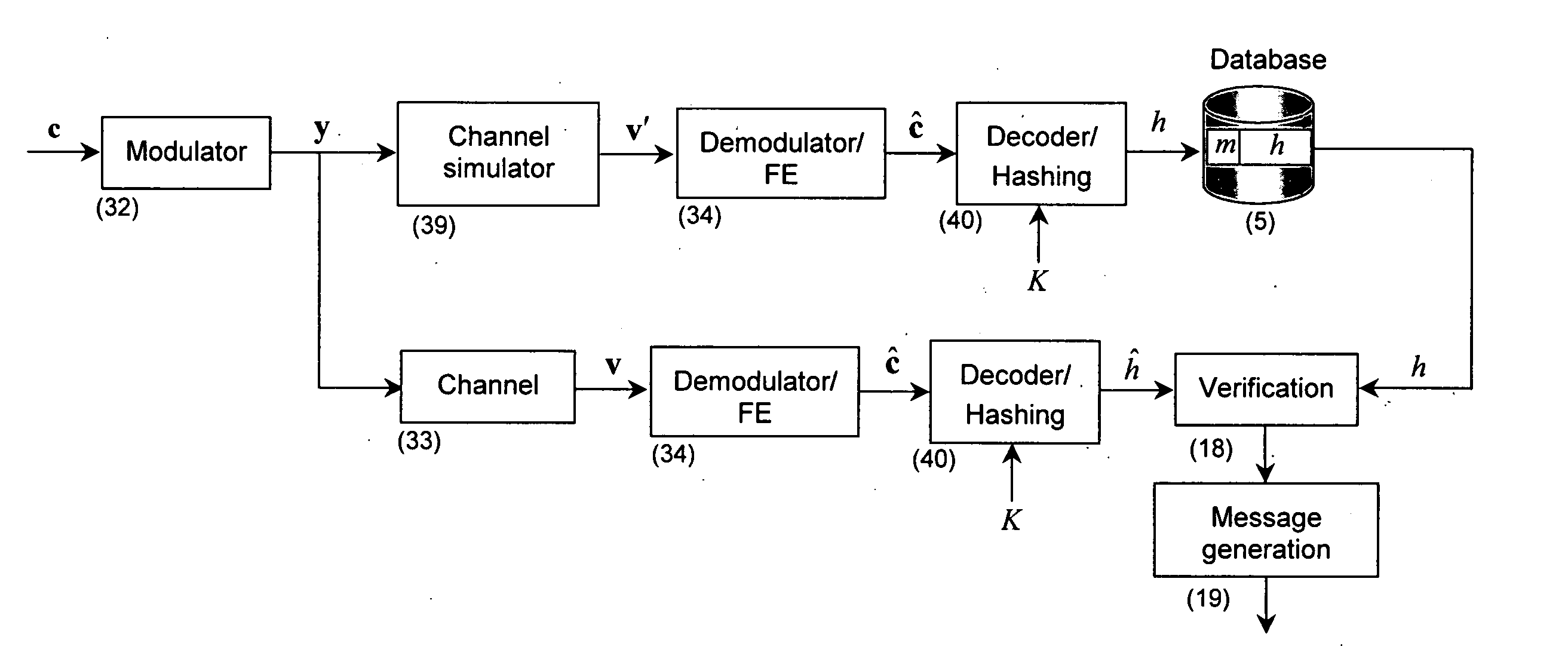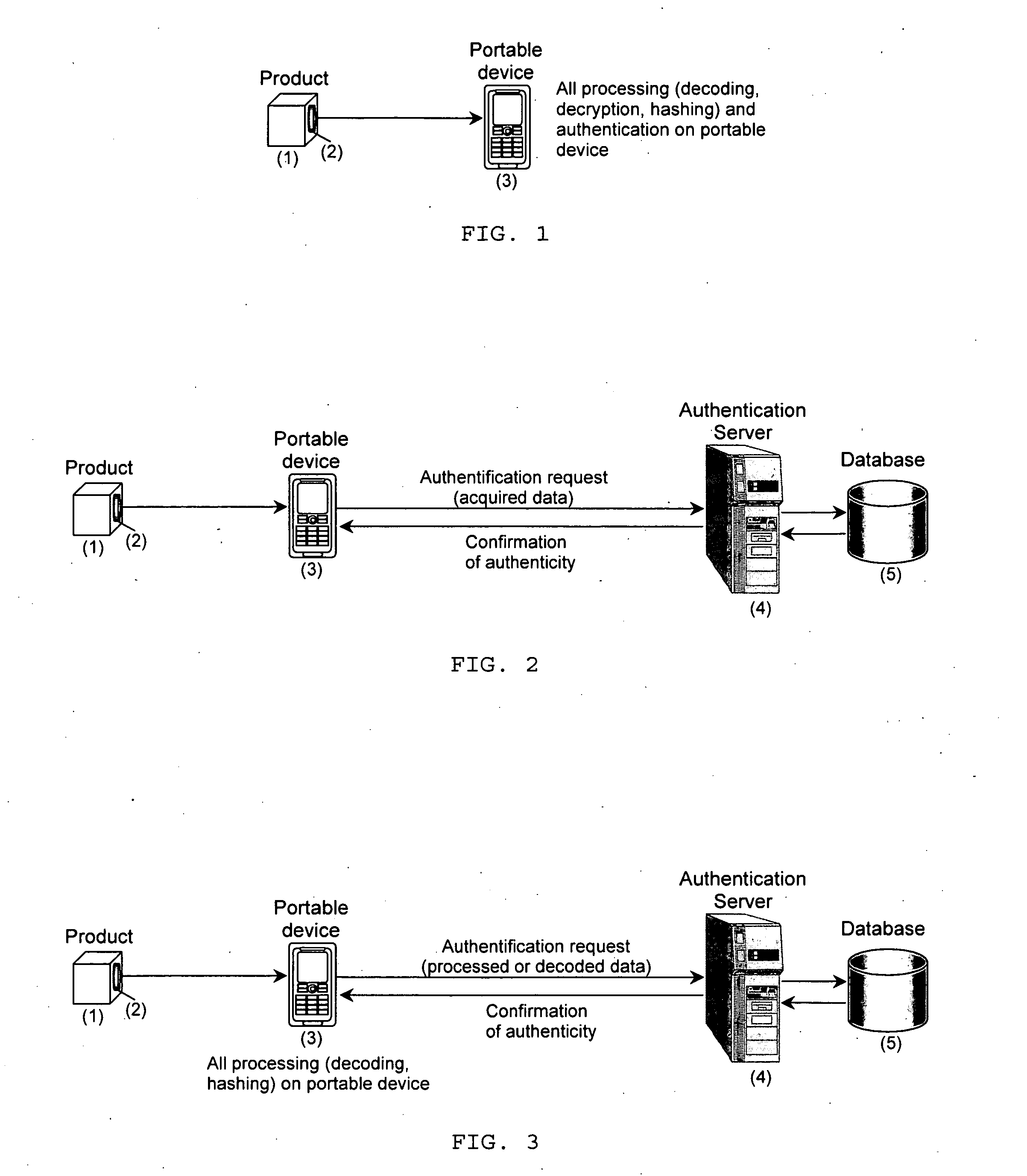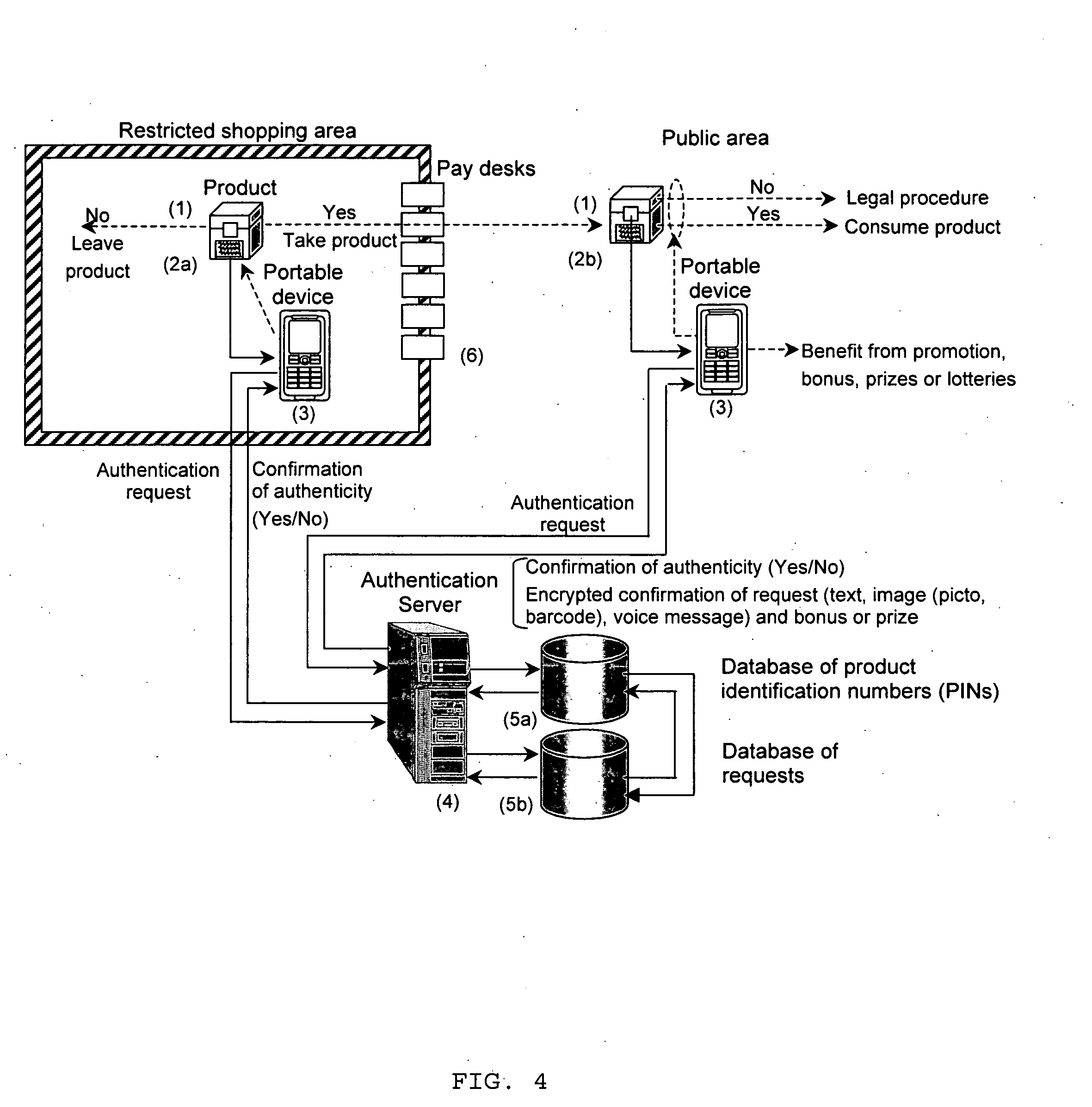[0022]1) The request for the product authentication is performed from a portable device (
mobile phone, PDA, Palm, Pocket PC, Smartphone, or any other equipment with communications and computing facilities) before and after product purchase based on open and / or hidden parts of a PIN with the registration of the authentication request data (phone number,
IP address, email, time as well as PIN open and hidden parts) in the request
database. This avoids the possibility of reusing the disclosed PIN for faked products or packaging. Requests based on the open part of the PIN can be performed before the pay
desk thus preserving product integrity and avoiding any complication in the case of non-confirmative reply, or if the
consumer has finally decided not to buy the product§. The authentication based on the hidden PIN part can be performed after product purchase and will inform the
database about the fact that the product has been bought or used.
[0025]4) Contrarily to the previous inventions where the information about the PIN should be acquired using either special sensors (case of physical materials) or corresponding digital cameras with
high resolution and low level of geometrical aberration and linear contrast (anti-
copying digital watermarks) or dialed / typed from a portable device with potential errors that might cause wrong authentication result, we propose to use ordinary portable communication devices equipped either with
microphone, habitual input means for
alphanumeric information or low-resolution cameras that one can find in the majority of currently available mobile phones or PDAs. The enhancement of performance and reduced requirements to the acquisition equipment in our case (it might be manual by means of a keyboard, oral using an internal
microphone or performed by a camera with consecutive
optical character recognition (OCR)) are due to the use of encoded
alphanumeric symbolism using error correction codes. Another
advantage comes from the usage of encoded audio signals reproduced by various means in front of the
microphone of the portable device as well as from the combination of visual or audio encoded information considered to be the host data with digital watermarks. All these allow faster
data input, reliable communication of essentially longer amount of information, higher security with respect to the regeneration of PINs by exhaustive search attacks as well as more natural and attractive form of interaction between the product and portable devices via habitual communications channels. At the same time, the devices, which are not equipped by the cameras, or even traditional fixed phone network communications can be used by the consumers, who for some reason do not possess the portable devices at the moment of authentication.
[0026]5) By registering the device identifier from which the authentication request is performed, one obtains the
advantage of controlling and preventing attempts to
attack the
system at the product and / or
server levels, track the information about the requests performed based on the open and hidden PINs thus providing
system confirmation about the initial and final product checking, opening or consumption. By registering the number of successful checks of different product items from a given portable device, one can award the device holder with special
product price reductions, sales, participation in the various lotteries or granting the portable device owner some extra free services, e.g., some extra free call time or messaging or other possibilities to motivate the authentication demands.
[0027]6) Contrarily to the previously considered state-of-the-art approaches, we also propose to send the
consumer the authentication report in the form of encoded and / or encrypted information (
text message,
audio signal, encoded symbologies including barcodes or text, image or audio with some hidden information), containing information about requesting device, PINs and time / date stamp, for various confirmation purposes for both the consumer and manufacturer in order to enhance the protection of both parties against counterfeiting attacks at various protocol levels.
[0028]7) The proposed approach does not require any special
software installation or device reconfiguration for switching from its normal operating mode to the authentication one and can be performed on essentially any device using standardized communication protocols. In the case of authorized auditors performing authentication
verification, the proposed technique is easily applicable either on solely portable devices without the need to contact any
authentication server in general or just sending the result of preliminary
data processing or extraction via standardized communication protocol.
 Login to View More
Login to View More  Login to View More
Login to View More 


